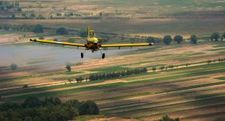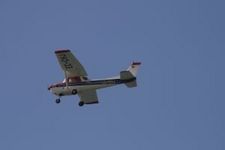 In early June, a family of six was killed after a small plane crashed unexpectedly in Polk County, Florida. The family was returning home to Kansas in a 2006 Pilatus Pc-12/47 plane following their vacation in the Bahamas when the aircraft reportedly began to break apart at 25,000 feet in the air. Those killed included the 45-year-old pilot, Ron Bramblage, His 43-year-old wife, Rebecca, and the couple’s four children who were between the ages of eight and 15.
In early June, a family of six was killed after a small plane crashed unexpectedly in Polk County, Florida. The family was returning home to Kansas in a 2006 Pilatus Pc-12/47 plane following their vacation in the Bahamas when the aircraft reportedly began to break apart at 25,000 feet in the air. Those killed included the 45-year-old pilot, Ron Bramblage, His 43-year-old wife, Rebecca, and the couple’s four children who were between the ages of eight and 15.
According to safety investigators, the pilot issued a mayday after the right wing became unattached midair. Witnesses stated the aircraft began to spin as it descended into the Tiger Creek Swamp near Lake Wales, Florida. The debris field reportedly spanned approximately four miles of rough terrain. Tragically, one of the family’s teenage children was reportedly thrown from the aircraft before it hit the ground. His body was later found by members of the Florida Fish and Wildlife Conservation Commission about half a mile from the crash site.
Helicopters were used to locate wreckage from the air. Swamp buggies, all terrain vehicles, and horses were later used in order to reach the area and gather crash debris. According to Tim Monville, an investigator with the National Transportation Safety Board, the cause of the crash is still unknown. He stated that a large piece of the wing is still missing and it could take up to one year to complete the accident investigation. Monville said reconstructing the plane will likely be required in order to determine the exact cause of the crash.
Unfortunately, aviation accidents like this one are normally tragic and there are rarely any survivors. When an aircraft accident victim survives, the injuries sustained are often permanently disabling and extremely costly to treat. Negligence resulting from aircraft malfunctions or defects, pilot error, poor aircraft maintenance, or air traffic control errors cause most aviation accidents. Sometimes, more than one party negligently contributes to an aircraft crash. Additionally, large commercial airlines, or common carriers, must provide passengers with a higher standard of care than other aircraft operators.
If you or a loved one was hurt or killed while riding in a charter plane, private jet, helicopter, commercial airliner, or in any other aircraft, you should contact a skilled Florida aviation accident attorney as soon as possible to discuss your options for recovery.
Read more “Small Plane Crash Near Lake Wales Kills Family of Six”





Recent Comments